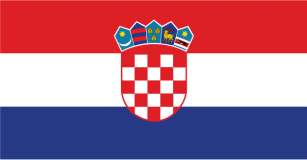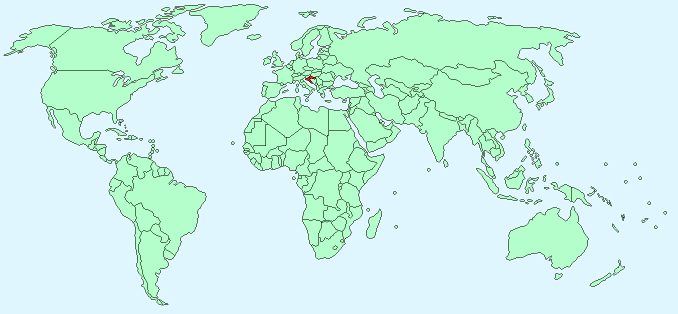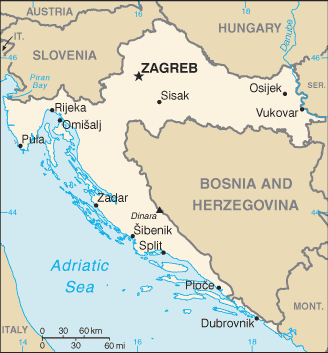Croatia


Continent – Europe
Region – Central Europe
Size – 56,542 km²
Geography – flat plains, low mountains and highlands
Language – Croatian, Serbian
Religion – 88% Catholic, 4% Orthodox, 1% Muslim, 1% 6% none
Monetary Unit – Kuna
Natural Resources – oil, some coal, bauxite, low-grade iron ore, calcium, gypsum, natural asphalt, silica, mica, clays, salt, hydropower
Agriculture – wheat, corn, sugar beets, sunflower seed, barley, alfalfa, clover, olives, citrus, grapes, soybeans, potatoes; livestock, dairy products
Industry – chemicals and plastics, machine tools, fabricated metal, electronics, pig iron and rolled steel products, aluminum, paper, wood products, construction materials, textiles, shipbuilding, petroleum and petroleum refining, food and beverages, tourism

Neighbouring Countries – Slovenia, Hungary, Serbia, Bosnia and Herzegovina, Montenegro
Population – 4,470,534 (2014 estimate)
Population Growth Rate – -0.03%
Average Life Expectancy – 74.9
Capital City – Zagreb (795,505)
Highest Mountain – Dinara (1830 m)
Longest River – Sava (945 km [total length])
Climate – Mediterranean, hot dry summers 18°C to 29°C cool winters 6°C to 14°C
Yearly Rainfall – 150 cm (approx)
Plant Life – trees, ferns, flowers, mosses
Animal Life – deer, brown bears, rabbits, fox, wild boar
Harvard Reference for this page:
Heather Y Wheeler. (2015). Croatia. Available: https://www.naturalhistoryonthenet.com/Facts_Figures/Country_Facts/croatia.htm. Last accessed Monday, July 18, 2016
Facts and Figures Pages
